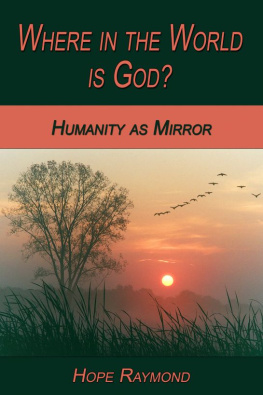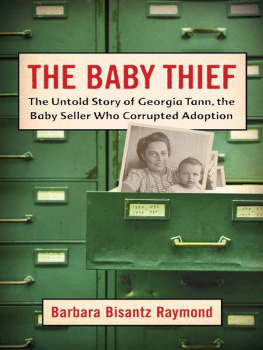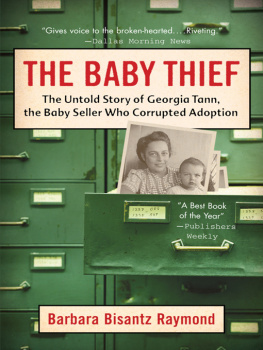Raymond - Wide Row Planting
Here you can read online Raymond - Wide Row Planting full text of the book (entire story) in english for free. Download pdf and epub, get meaning, cover and reviews about this ebook. City: Pownal;Vt, year: 1983;1977, publisher: Storey Publishing, LLC, genre: Children. Description of the work, (preface) as well as reviews are available. Best literature library LitArk.com created for fans of good reading and offers a wide selection of genres:
Romance novel
Science fiction
Adventure
Detective
Science
History
Home and family
Prose
Art
Politics
Computer
Non-fiction
Religion
Business
Children
Humor
Choose a favorite category and find really read worthwhile books. Enjoy immersion in the world of imagination, feel the emotions of the characters or learn something new for yourself, make an fascinating discovery.

Wide Row Planting: summary, description and annotation
We offer to read an annotation, description, summary or preface (depends on what the author of the book "Wide Row Planting" wrote himself). If you haven't found the necessary information about the book — write in the comments, we will try to find it.
Wide Row Planting — read online for free the complete book (whole text) full work
Below is the text of the book, divided by pages. System saving the place of the last page read, allows you to conveniently read the book "Wide Row Planting" online for free, without having to search again every time where you left off. Put a bookmark, and you can go to the page where you finished reading at any time.
Font size:
Interval:
Bookmark:
by Dick Raymond
This is a good question. But maybe a better question would be; Why narrow-row planting? Think about it. Is there any good reason to arrange all your vegetables in single file? No one has ever given me a satisfactory answer to this.
Wide-row planting is simply a matter of broadcasting seeds in bands anywhere from ten inches to three or more feet wide. I started experimenting with it many years ago and have been continually amazed and excited by the results. One of the most surprising things I found is that it can actually be easier and involve less work than conventional gardening methods. But there are many other benefits as well, and Id like to share them with you now.
Just about anyone can grow two to four times as much produce when they start using wide rows. The reason for this is obvious. In a wide-row garden, more square feet of garden space is actually producing food and less is wasted on cultivated areas between rows.

But wont individual plants produce less when they are more crowded? Yes, there will usually be a slight decrease in production per seed perhaps about 25 percent. But since a wide row contains so many more plants than a regular row, there is a big increase in production per square foot.
For example, if you compare a single row to a row that is twelve inches wide, you can expect up to three times as much produce per foot from the wide row. With rows that are more than a foot wide, you can sometimes get four or five times as much produce.
Lets look at it another way. A fifty-foot single row of peas might yield about twenty servings. That same length of wide row might yield sixty or more servings. Think of how much less you would have to buy at the store.
If you try wide-row planting, you will spend much less time weeding and harvesting. This is partly because you have to move around much less. When you bend down to pull weeds or pick peas in a regular row, you can only reach about three feet in either direction. When you bend over a wide row, you have far more growing area right at your fingertips. You can pick or weed the equivalent of nine to fifteen feet of single row without moving.
You can also save some time early in the season. Seeds planted in wide rows, do not have to be exactly spaced. Random distances will work just as well. This means that at planting time, you dont have to be quite as careful about distributing the seeds evenly. You can thin them easily after they come up with an ordinary garden rake. I will explain how to do this in a later section.
Plants in a wide row will have to be watered far less, in many cases not at all. This is another time-saver. Once the plants have grown tall enough to shade the ground, moisture will be held there. Any weeds that germinate after the plants are well established will not have much of a chance to grow. The only place they will appear is on the sides of the row.
Say, for example, that you would plant a row of onions thirty feet long to have enough to feed your family. To get the same number of onions, you would only have to plant a row ten feet long if the row were one foot wide. If you planted a row that was two feet wide, it would need to be only five feet long. By planting shorter rows you leave yourself space to plant more varieties of vegetables than you could before. This is a big help if your garden space is limited.
A wide row shades the soil beneath it, keeping the soil cool and moist. Last year, during two very dry spells (when all of my neighbors were complaining about watering every day), my wide rows of beets, lettuce, carrots, peas, and beans did very well with no watering at all.
Wind has a strong drying effect on plants. A staked tomato plant that sticks up in the air may take twice as much moisture out of the soil as one which is allowed to run along the ground. The staked plant transpires, or releases more moisture to the atmosphere, because it is more exposed to the winds. Only those plants on the edge of a wide row feel the drying effects of the wind.
Many people like to mulch their gardens, covering the soil with a layer of material, either organic matter such as hay or straw, or a sheet of plastic material. What they are doing is keeping the sun from reaching the soil so that weed seeds do not germinate and water does not evaporate.
In a wide row, you are doing almost the same thing. I like to think of a band of growing foliage as creating what I call a shade mulch. Its even better because you cut out all the expense and labor of hauling in enormous amounts of mulching material. You may still want to mulch between the rows, so that you have to do no weeding, but in most cases you should never have to mulch between the plants themselves.
Some folks think that it is difficult to harvest peas or beans. But in a wide row all you need to do is to take a stool, sit down next to the row (or even in the row) set a basket next to you, and gather in a peck or so of produce. When you are finished, you can move up the row, sit down again, and pick another peck. You may miss a few peas or beans this way because there will be so many, but a few ripe pods will enrich your soil if you till the plants back in when they have finished bearing. The same thing is true of all other wide row crops. Since they produce so much more per foot of row, you can pick a lot more from a single location.

Shading the ground keeps it cooler. Crops such as spinach will bolt, or go to seed, quite quickly once the weather gets warmer in early summer. A wide row will continue to produce tender green leaves much longer than will a single row.
Anyone who has ever grown spinach knows that it is difficult to raise enough. A single row of spinach one hundred feet long might fill a twenty-pound bag. In a row fourteen inches wide and one hundred feet long you should be able to pick as many as five or six twenty-pound bagsful.
Most gardeners find it impossible to grow what we call English peas in warmer climates because the weather gets too hot and dry for them to do well. I have received many letters from such places as Texas and Hawaii, where people tell me that they are able to grow peas for the first time using the wide-row method. Even here in Vermont peas will not do well in July or August sometimes not even in September. I find that if I use a variety of Wando, which will stand some heat, I am able to grow peas from early spring until late fall.
Soil experts tell me that a crop that grows in an even environment without being overly moist after a rain and too dry during a sunny spell will be far superior to one that has been growing under varied conditions. I wont say that vegetables grown in wide rows will be larger than those grown the conventional way. But I can assure you that the texture and consistency of the produce will be greatly improved. Smaller vegetables grown in wide rows will be crisper, tastier, and more moist. They will also be less prone to diseases because they will have less dirt splashed on them by raindrops.
Font size:
Interval:
Bookmark:
Similar books «Wide Row Planting»
Look at similar books to Wide Row Planting. We have selected literature similar in name and meaning in the hope of providing readers with more options to find new, interesting, not yet read works.
Discussion, reviews of the book Wide Row Planting and just readers' own opinions. Leave your comments, write what you think about the work, its meaning or the main characters. Specify what exactly you liked and what you didn't like, and why you think so.



